Abstract
The growth of Candida albicans WD 18-4, a methionine and lysine double auxotroph, on a variety of methionine- and lysine-containing peptides was determined. This yeast does not excrete extracellular peptidases. Thus, the growth response to peptides containing the required amino acid is a measure of peptide transport. A variety of methionine-containing peptides such as Met-Met, Met-Met-Met, and Met-Met-Met-Met-Met are transported. Acylation of the N-terminus of transported peptides does not affect their transport, but derivitization of the C-terminus prevents peptide uptake. In contrast, all lysine-containing peptides tested, except Lys-Gly, were not growth substrates. The inability of a peptide to substitute for the requisite amino acid was not due to the absence of cellular peptidases or to toxicity of the nonutilized peptides. Several potentially toxic amino acids were carried into Candida as a component of transported peptides. This establishes the peptide transport system as a possible tool for the design of antibiotics for Candida albicans.
Full text
PDF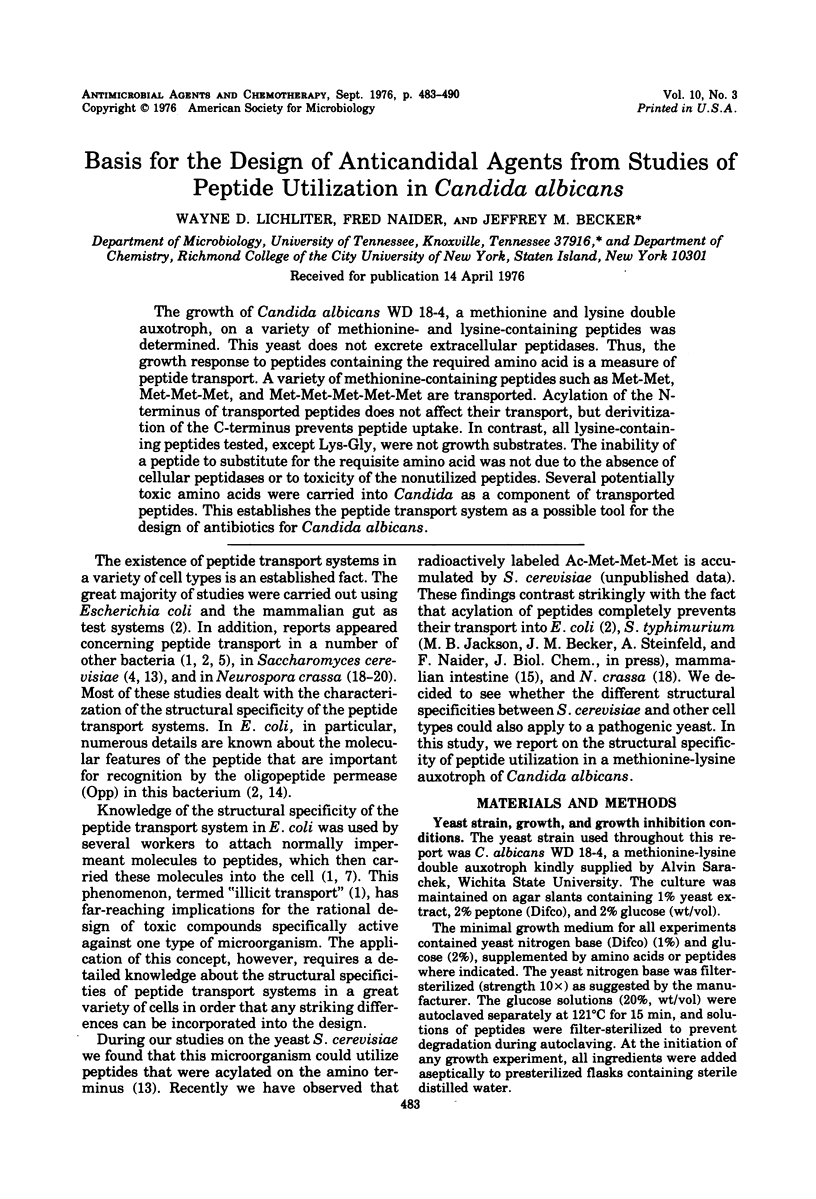

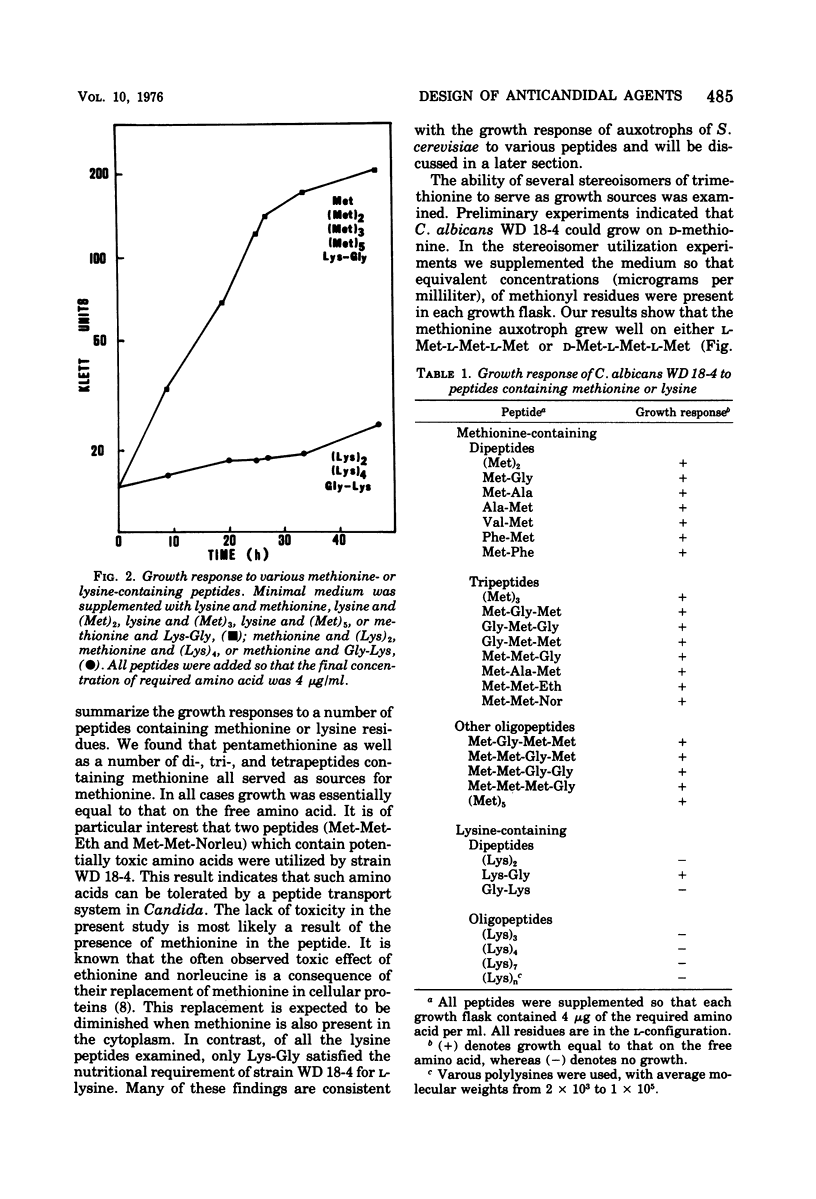
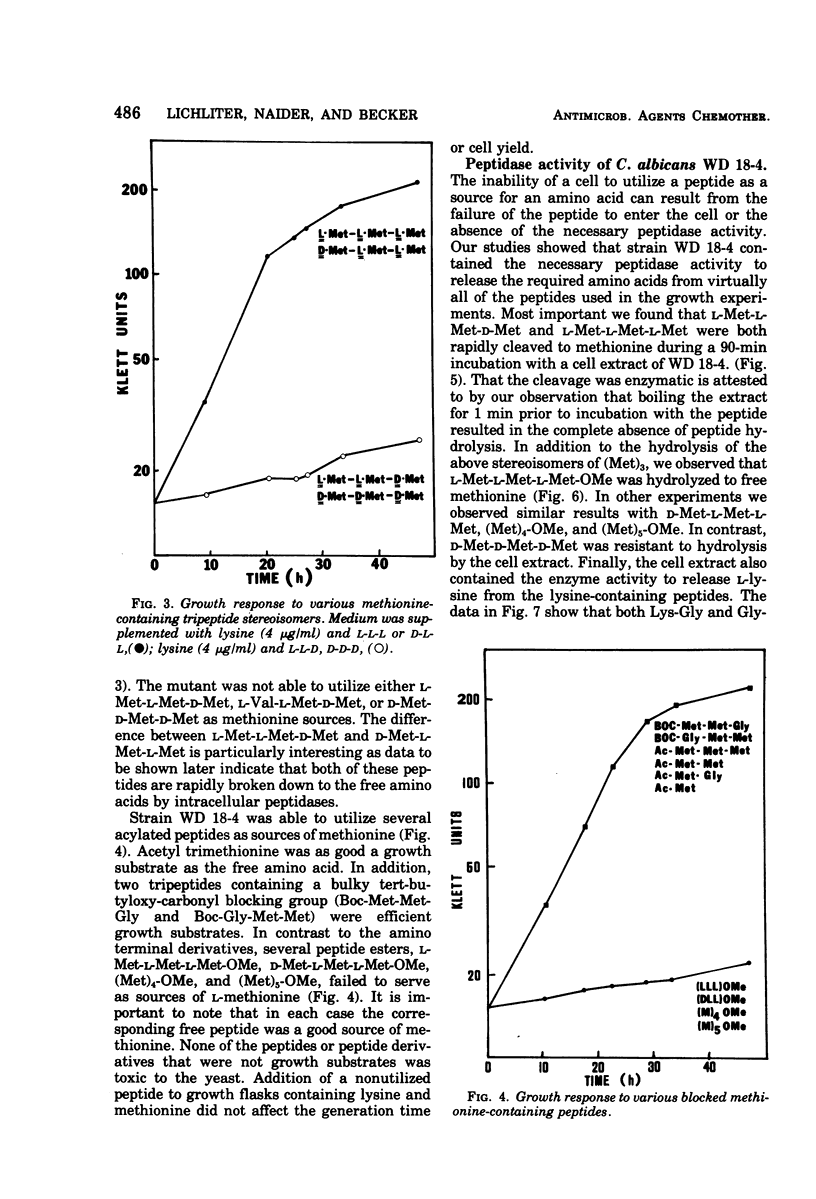
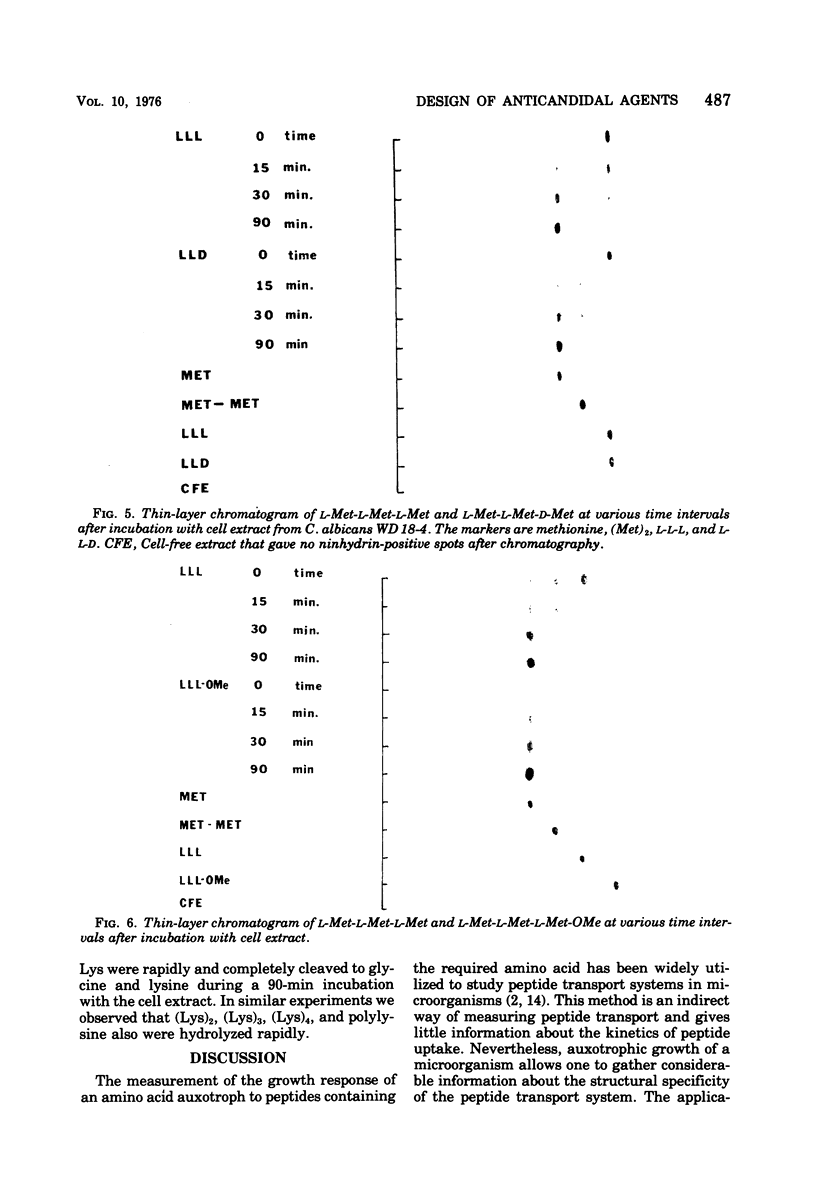
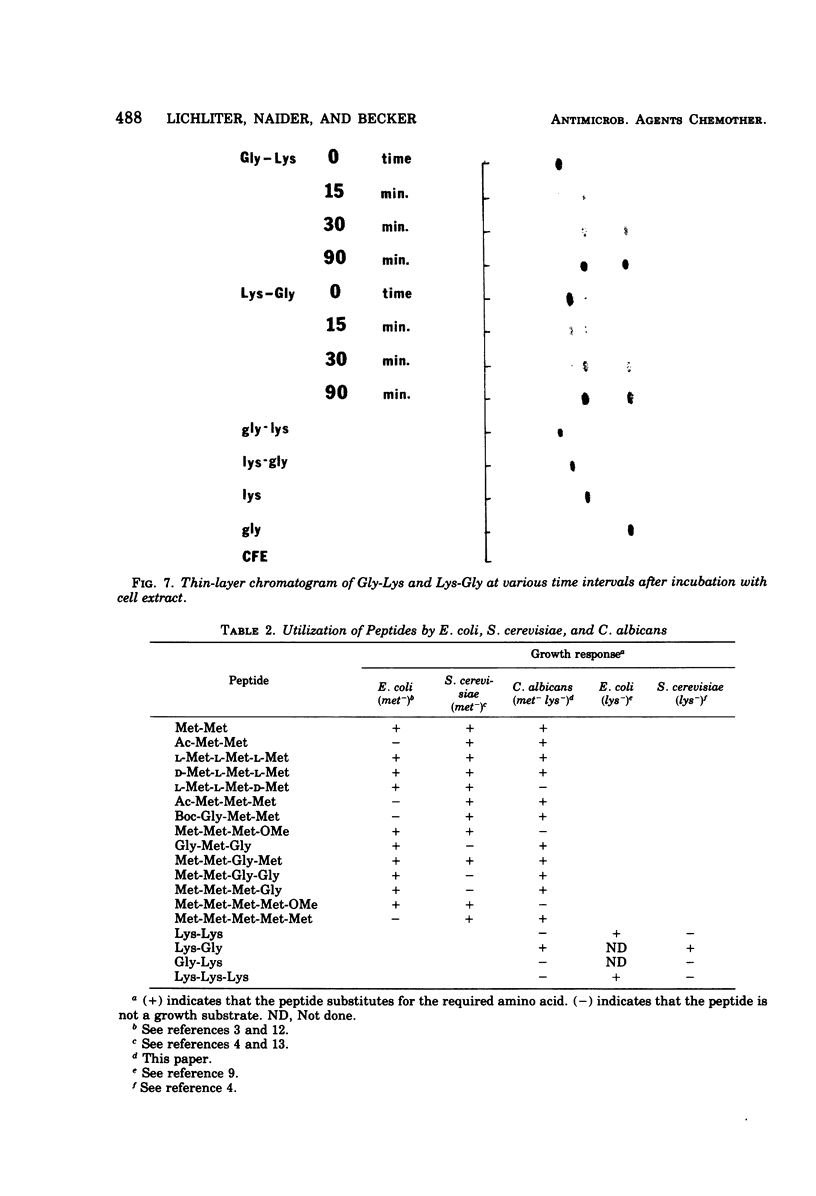
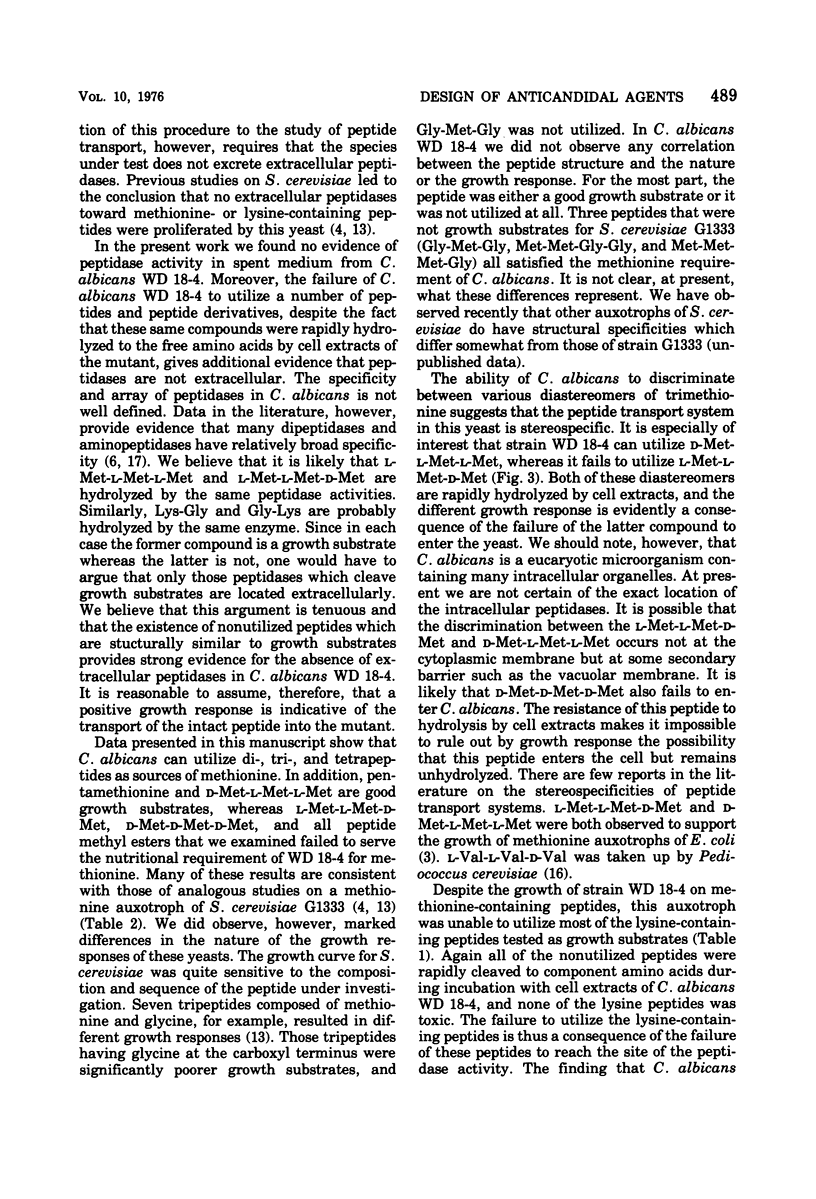
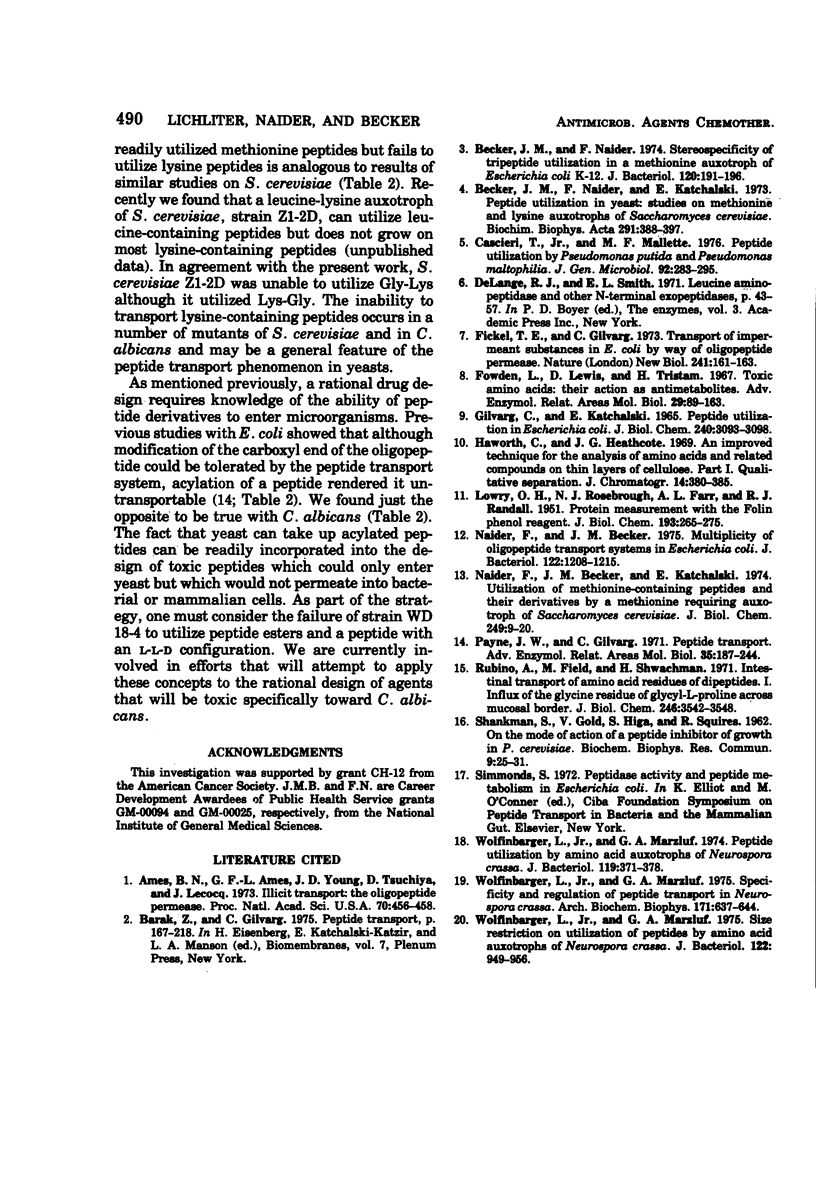
Images in this article
Selected References
These references are in PubMed. This may not be the complete list of references from this article.
- Ames B. N., Ames G. F., Young J. D., Tsuchiya D., Lecocq J. Illicit transport: the oligopeptide permease. Proc Natl Acad Sci U S A. 1973 Feb;70(2):456–458. doi: 10.1073/pnas.70.2.456. [DOI] [PMC free article] [PubMed] [Google Scholar]
- Barak Z., Gilvarg C. Peptide transport. Biomembranes. 1975;7:167–218. doi: 10.1007/978-1-4684-7668-2_7. [DOI] [PubMed] [Google Scholar]
- Becker J. M., Naider F. Stereospecificity of tripeptide utilization in a methionine auxotroph of Escherichia coli K-12. J Bacteriol. 1974 Oct;120(1):191–196. doi: 10.1128/jb.120.1.191-196.1974. [DOI] [PMC free article] [PubMed] [Google Scholar]
- Cascieri T., Mallette M. F. Peptide utilization by Pseudomonas putida and Pseudomonas maltophilia. J Gen Microbiol. 1976 Feb;92(2):283–295. doi: 10.1099/00221287-92-2-283. [DOI] [PubMed] [Google Scholar]
- Fickel T. E., Gilvarg C. Transport of impermeant substances in E. coli by way of oligopeptide permease. Nat New Biol. 1973 Feb 7;241(110):161–163. doi: 10.1038/newbio241161a0. [DOI] [PubMed] [Google Scholar]
- GILVARG C., KATCHALSKI E. PEPTIDE UTILIZATION IN ESCHERICHIA COLI. J Biol Chem. 1965 Jul;240:3093–3098. [PubMed] [Google Scholar]
- LOWRY O. H., ROSEBROUGH N. J., FARR A. L., RANDALL R. J. Protein measurement with the Folin phenol reagent. J Biol Chem. 1951 Nov;193(1):265–275. [PubMed] [Google Scholar]
- Naider F., Becker J. M., Katzir-Katchalski E. Utilization of methionine-containing peptides and their derivatives by a methionine-requiring auxotroph of Saccharomyces cerevisiae. J Biol Chem. 1974 Jan 10;249(1):9–20. [PubMed] [Google Scholar]
- Naider F., Becker J. M. Multiplicity of oligopeptide transport systems in Escherichia coli. J Bacteriol. 1975 Jun;122(3):1208–1215. doi: 10.1128/jb.122.3.1208-1215.1975. [DOI] [PMC free article] [PubMed] [Google Scholar]
- Rubino A., Field M., Shwachman H. Intestinal transport of amino acid residues of dipeptides. I. Influx of the glycine residue of glycyl-L-proline across mucosal border. J Biol Chem. 1971 Jun 10;246(11):3542–3548. [PubMed] [Google Scholar]
- SHANKMAN S., GOLD V., HIGA S., SQUIRES R. On the mode of action of a peptide inhibitor of growth in P. cerevisiae. Biochem Biophys Res Commun. 1962 Sep 25;9:25–31. doi: 10.1016/0006-291x(62)90081-5. [DOI] [PubMed] [Google Scholar]
- Wolfinbarger L., Jr, Marzluf G. A. Peptide utilization by amino acid auxotrophs of Neurospora crassa. J Bacteriol. 1974 Aug;119(2):371–378. doi: 10.1128/jb.119.2.371-378.1974. [DOI] [PMC free article] [PubMed] [Google Scholar]
- Wolfinbarger L., Jr, Marzluf G. A. Size restriction on utilization of peptides by amino acid auxotrophs of Neurospora crassa. J Bacteriol. 1975 Jun;122(3):949–956. doi: 10.1128/jb.122.3.949-956.1975. [DOI] [PMC free article] [PubMed] [Google Scholar]
- Wolfinbarger L., Jr, Marzluf G. A. Specificity and regulation of peptide transport on Neurospora crassa. Arch Biochem Biophys. 1975 Dec;171(2):637–644. doi: 10.1016/0003-9861(75)90074-0. [DOI] [PubMed] [Google Scholar]





